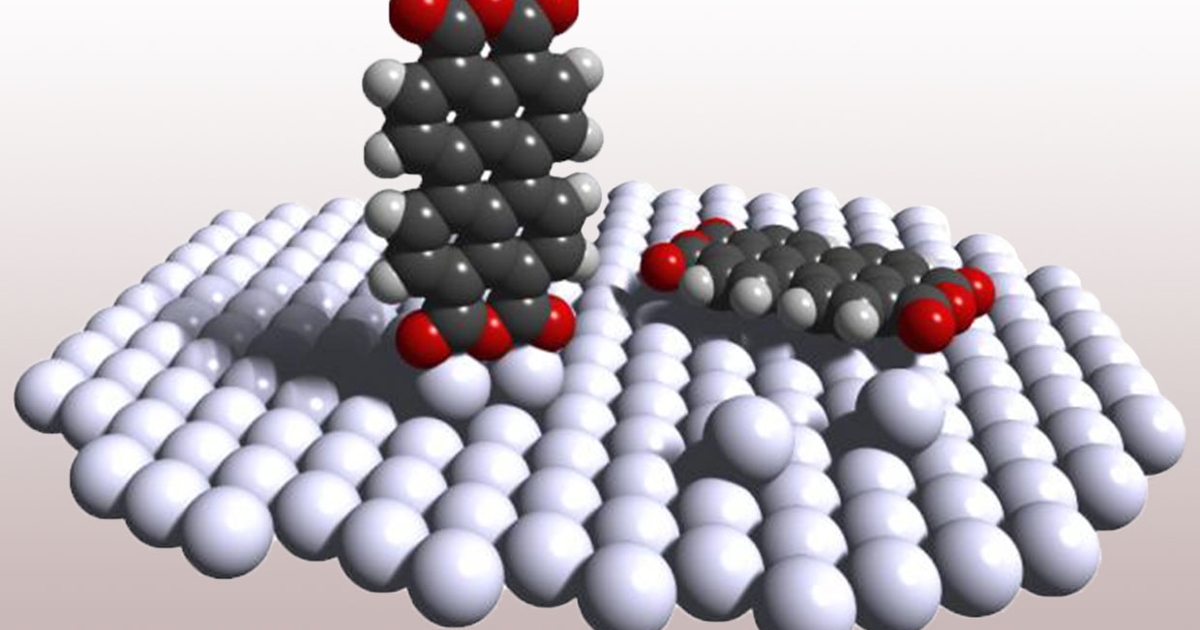This most recent work is actually an accumulation of a decade’s worth of research into manipulating molecules with an SPM. There have been several important developments on the way, according to Ruslan Temirov, head of the low temperature SPM group at the Peter Grünberg Institute. The earliest of them, achieved in 2008, made it possible to contact the molecule by the tip of the microscope very precisely. “This precise contact provided us with the necessary grip to study possibilities of controlled molecular manipulation,” adds Temirov.
Another development that has been achieved recently allowed the scientists to manipulate molecules “by hand,” which sped up the learning and in turn made the process of manipulation much more intuitive, according to Temirov.
The PTCDA molecule that was used in the experiments has a chemical structure that enables precise contacting to the tip of the SPM. There are four oxygen atoms at the corners of the rectangular-like molecule. While these properties make the PTCDA molecule conducive for this manipulation, Temirov points out that there are other molecules that have similar chemical motifs and which could be contacted and hence manipulated by the SPM tip.
While taking a step toward molecular nanotechnology will likely excite the imaginations of those who have long been proponents of it, Temirov believes the impact of this work goes far beyond that. It opens up a field of so-called metastable configurations, in which a system maintains a position other than its state of least energy. In this case, the molecules don’t lie down on the surface as the laws of thermodynamics would dictate.
